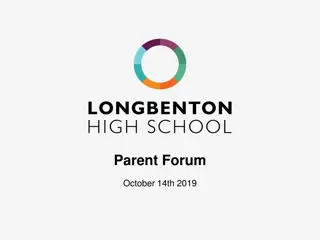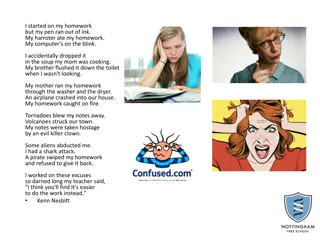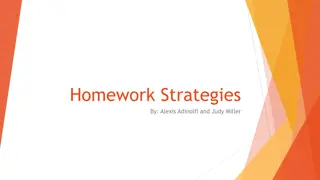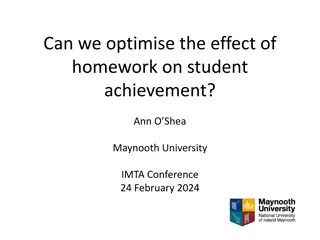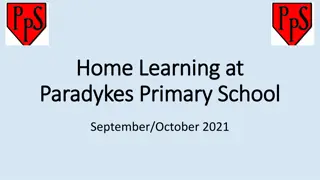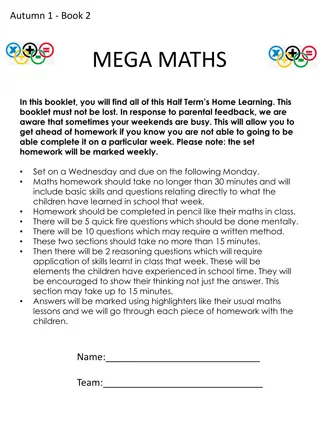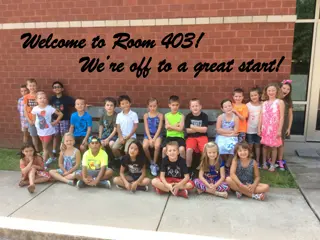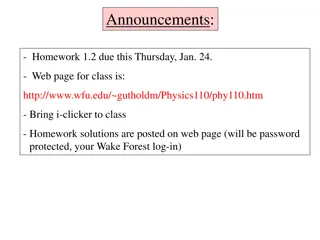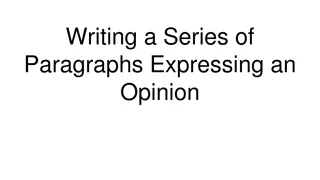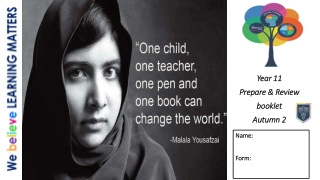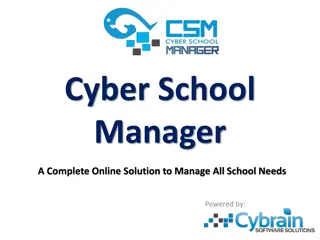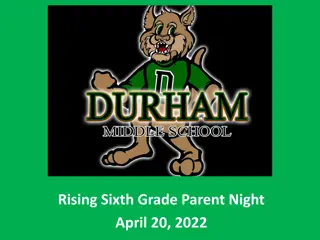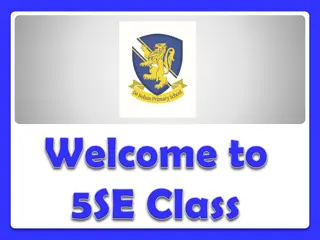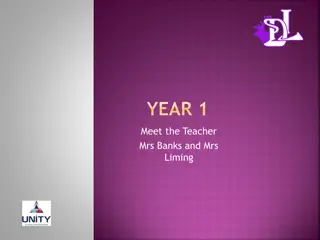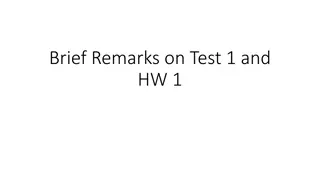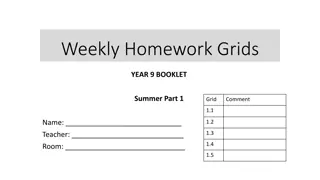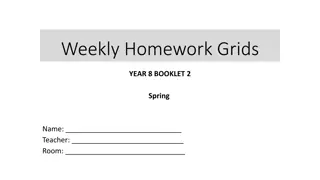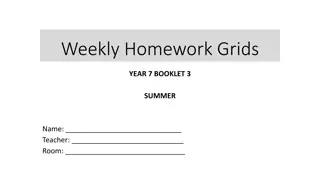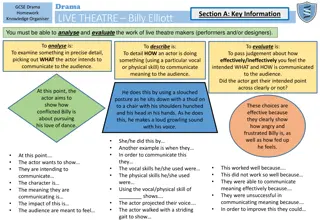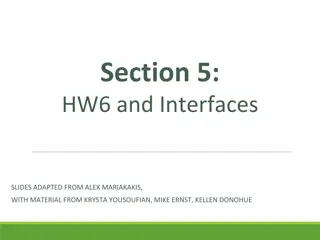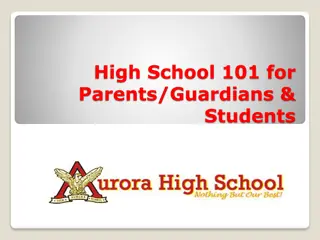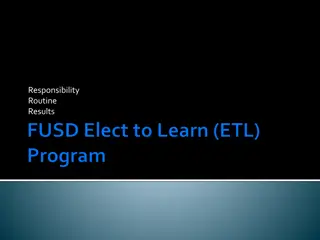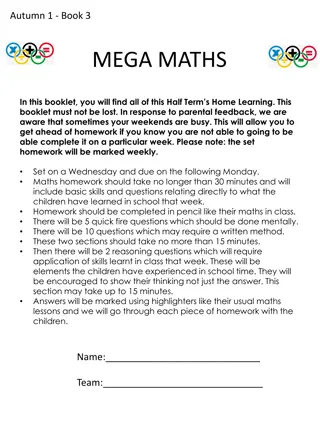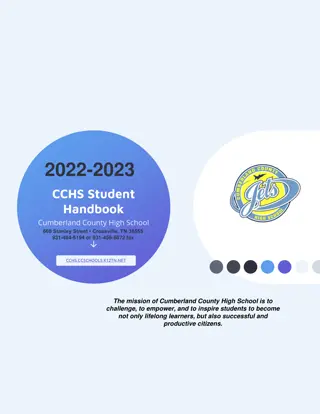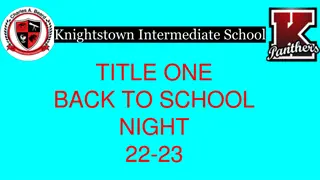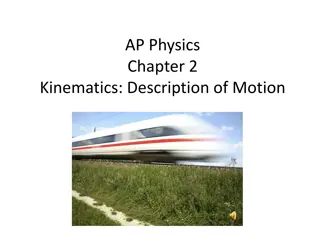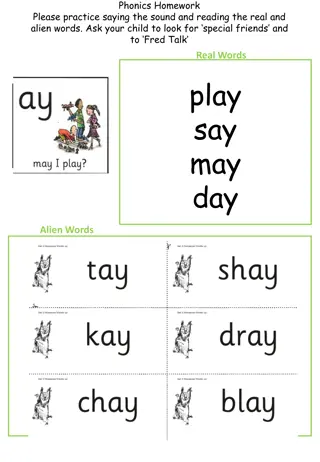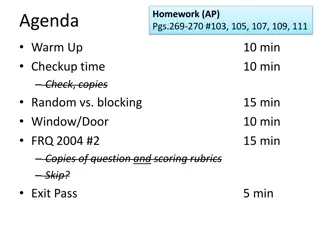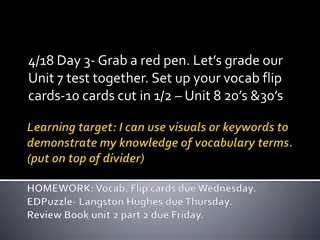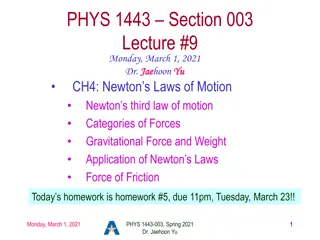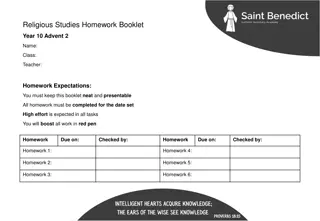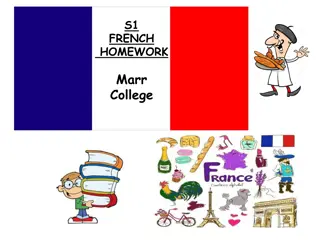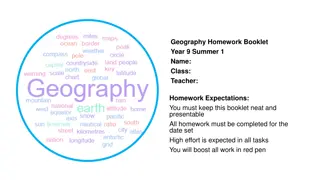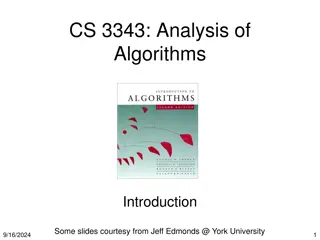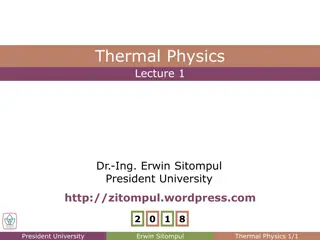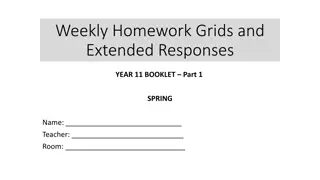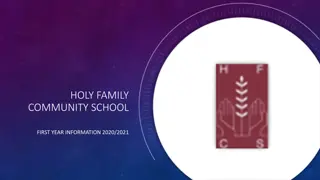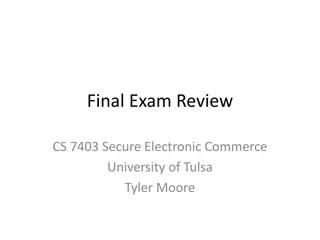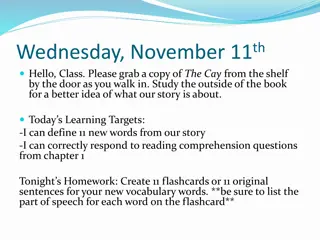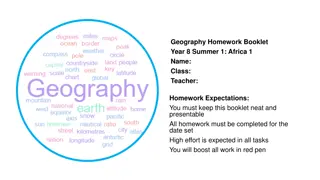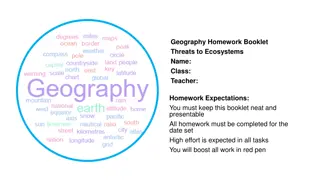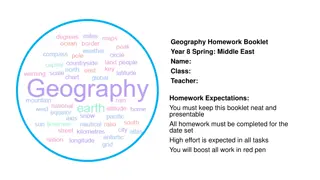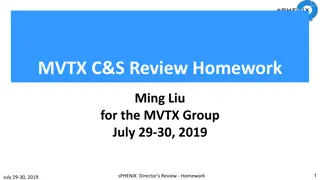Effective Homework Techniques and Technology for School Success
Enhance your child's academic performance with proven homework strategies catered to different school levels. Discover useful tips for reading, writing, and spelling assignments, along with effective educational technology tools. Encourage a positive learning environment by chunking tasks, providing specific praise, and utilizing dyslexia as a strength rather than a setback. Embrace innovative approaches to homework to foster your child's growth and development.
Download Presentation

Please find below an Image/Link to download the presentation.
The content on the website is provided AS IS for your information and personal use only. It may not be sold, licensed, or shared on other websites without obtaining consent from the author. Download presentation by click this link. If you encounter any issues during the download, it is possible that the publisher has removed the file from their server.
E N D
Presentation Transcript
@HOME HELPFUL HOMEWORK TECHNIQUES AND TECHNOLOGY APPs & WEBSITES FOR ELEMENTARY, INTERMEDIATE, MIDDLE & HIGH SCHOOL
@HOME FOR ALL Homework should be a practice or a review of something already learned or be familiar to your child; Develop a Homework Routine including the location, materials needed and time; Chunk homework into manageable parts allowing for brain breaks in between tasks to ensure that your child does not become frustrated; Read and re-read instructions to your child to make sure they understand all requirements; and Give your child lots of praise and be specific on what they have done well! Your Child s Dyslexia should be viewed as an Impactful WAVE in their SEA of Strengths!
@HOME FOR ELEMENTARY Reading Assignments: Read aloud to your child, pointing to words as you read; Have your child follow the movement of your finger as you are reading; Ask your child s teacher for possibly two copies of the book or passage so that you can sit side-by-side taking turns or choral reading the assignment together; When comfortable, have your child read aloud, allowing for aids such as a ruler or bookmark, even the eraser end of a pencil to follow text; and Ask your child s teacher if there are on-line audio versions of campus basal stories or taped versions of the book/assignment where your child can listen as an alternative.
@HOME FOR ELEMENTARY CONTINUED Writing and Spelling Assignments: Handwrite or scribe for your child so that they can get their ideas on paper more accurately, then allow them to re-copy if needed (this includes Spelling Words Idea: use highlighter and allow them to trace with pencil); Create a Power Point or Google presentation first to act as an outline; Encourage your child to use the computer to type and generate their writing assignments using Spell Check along with different fonts and different sizes of text; Draw pictures first adding text to them to help generate ideas and or story sequence; and Spelling should be taught systematically using specific spelling/phonics rules and word patterns which allow for only 1 maybe 2 to be practiced or assessed at a time. Be careful of spelling exceptions. @home allow for computer typing of words, letter tile manipulation, dry erase, spelling box templates, and provide a frequently misspelled word list/dictionary.
ELEMENTARY APPS Starfall, I m Reading-(1st, 2nd) Early Readers Spelling City (All)-provides already generated spelling lists or teacher created lists (log in-password) A Dyslexics Dictionary -allows independent discovery of words and/or a quick check on uncertain words. ABC Cursive Writing Free- teaches how to write in cursive using zoo animals. It also teaches the sounds of the individual letters in each word, as well as the pronunciation of the whole word itself. Fry Words Free-contains flash cards for 1,000 of the most common words used for teaching writing, reading, and spelling. (MISD) ABC Easy Writer Free- helps to write letters and numbers by tracing and includes upper and lower case letters as well as print and cursive writing. http://dyslexiahelp.umich.edu/tools/apps/age/early-elementary
@HOME FOR INTERMEDIATE Reading Assignments: What to do Before, During and After your child reads Before: Discuss book genre and purpose of reading; book report, fiction (entertain), non-fiction-(inform), self selected by favorite topic Preview the text locating any new or unfamiliar vocabulary then discuss the meaning(s) making sure the student has a picture in mind for that word Non-fiction: address key story structure(s) such as the table of contents, index/dictionary, chapter titles, section headings, boldface words, tables and pictures Activate your child s prior knowledge of topic, schema and ask for predictions and why/how it relates to the pre-reading clues Help your student make the connections within the story plot; directly point out the important facts in expository text and make a note of it During: Read aloud with parent; choral reading and shared reading practice; Allow for child to read silently using page or passage markers (sticky note) as to where they are to stop and take a break; During breaks, have your child share and discuss what they have read with you in order to clarify meaning; story sequence, important story elements and relevant story vocabulary. Actively Reading ; and Set a goal! Be specific on goals and/or learning objectives ( by the end of page 7, I need for you to ).
@HOME FOR INTERMEDIATE CONTINUED After: Ask follow up comprehension questions providing for a broad spectrum of ways your child can demonstrate their understanding of what they have just read in a less formal format. Examples: Write/illustrate a comic strip with the main characters, illustrate a new or different book jacket for the book, rewrite the ending of the story, give an oral presentation/book report, draw a poster with a story map or character analysis chart, or together create a trivia game with specific quotes from the book ("Who would have said this? or Who did it? ); Make Connections: Text to Self ; Text to Text; Text to World; and Keep homework time as short and sweet as possible -chunk the time if necessary by subject, i.e., reading 10 minutes; break; math 15 minutes; etc. Keep an eye out for fatigue. Your student has worked twice as hard at school as their non-disabled peers; building stronger stamina will take time.
INTERMEDIATE APPS Spelling City (All)-provides already generated spelling lists or teacher created lists (log in- password) ABC Cursive Writing Free - teaches how to write in cursive using zoo animals. It also teaches the sounds of the individual letters in each word, as well as the pronunciation of the whole word itself. Fry Words Free - contains flash cards for 1,000 of the most common words used for teaching writing, reading, and spelling. (MISD) Whirly Word - word games Lectio -allows the user to snap a picture of a text-filled page and have a specific word or read aloud. Does not require access to internet, and allows the user to select just the word he or she wants help with, instead of reading the entire out loud. $4.99 words passage http://dyslexiahelp.umich.edu/tools/apps/age/later-elementary
@HOME FOR MIDDLE AND HIGH SCHOOL Reading and Writing Assignments: Always encourage your child to read aloud; Chunk assignments into easier manageable parts by chapters , paragraphs or by pages; Modeling good reading is key so parents share the reading with your child I read, you read; Urge double reading reading once to work through the words and then a second time to gain meaning (shared reading, choral reading or audio); Allow for child to read silently using page or passage markers (sticky note) as to where they are to stop and take a break; Stop and Jot stop and write down what they have read in order to clarify meaning, the story sequence, important story elements and relevant story vocabulary. Actively Reading ; Try to complete the more difficult assignments first; Always use a Spell Checker and never turn in writing assignments without someone proofing first; and Do not allow them to procrastinate and leave assignments to the last minute eliminate the panic!
MIDDLE AND HIGH SCHOOL APPS Whirly Word - word games Lectio -allows the user to snap a picture of a text-filled page and have a specific word or words read aloud. Does not require access to internet, and allows the user to select just the word he or she wants help with, instead of reading the entire passage out loud. $4.99 Mad Libs Free - interactive game is a great way to teach kids the difference between different parts of speech. Idea Sketch Free - lets you easily draw a diagrams such as mind/concept maps or flow chart. Can convert info to a text outline, and vice versa. It can be used to brainstorm new ideas, illustrate concepts, make lists and outlines, plan presentations, create organizational charts, and more. Go Read - is a part of Bookshare, where you can access one of the largest online libraries. This app also has text-to-speech capabilities http://dyslexiahelp.umich.edu/tools/apps/age/middle-school http://dyslexiahelp.umich.edu/tools/apps/age/high-school


